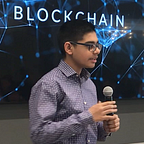The Next Picasso Is Technology
There is a new, emerging technology currently being developed known as Artificial Intelligence. So far, it has the capability to automate many existing jobs and tasks, both simple and complex. Some have even postulated that AI could replace humans. However, one of the attributes humans possess that even artificial intelligence does not is creativity.
The ability to think of something completely new and unique is something AI can’t replicate. Right?
Actually, no. Creativity is really just your experiences combined with your genetic code and the desire to create something new. All of which can be replicated by a technology literally designed to mimic humans.
But how? How could a machine possibly create something new? The process of creating something new is really just taking what you know and letting your genetic programming do the rest. The only difference with a machine is that their programming is actual code, and their knowledge is a dataset you give them.
AI is a rapidly emerging technology with a lot of different applications, and one thing you can create is known as a GAN. Generative Adversarial Network. Let’s break this down.
How GANs Work
A GAN is comprised of two neural networks, a generator and a discriminator. To explain this, let’s take the example of a person trying to create counterfeit coins and an inspector trying to figure out which is which.
The generator is the counterfeiter. Based on a dataset that you give it, this generator tries to create a coin that looks like what it has been given, but is actually different. It’s taking everything that is similar about these “coins” and using it to create the perfect counterfeit coin. This coin is different than the rest of the coins, but shares similar properties.
The discriminator is the inspector. Based on differences it can find between the counterfeit coin and the real coin, it tries to determine which is which. At first, this is easy, but over time, the generator gets better and better, until it can finally fool the discriminator.
This can be done with any dataset. Coins, flowers, even Pokemon! (But Pokemon end up looking weird.) However, GANs aren’t just for creating new Pokemon. They actually have multiple uses.
Creating counterfeit coins isn’t the only use for a GAN. They can be used to generate art, fill in missing parts of images, and convert text to images. GANs allow computers to be creative, which is really just amazing.
Generating art
Based on a dataset, GANs can produce art so realistic, a human couldn’t tell the difference between real art and GAN art. Computers are literally creating art that we have never seen before.
These are just some examples of art that could have been created by master artists, but were actually created by GANs. These pieces are unique, which means computers are creating art we have never seen before.
Filling in missing parts of images
GANs can fill in missing parts of images as well as remove objects that might be blocking things in the picture, like your finger blocking the camera. (That happens to everyone, right?)
This doesn’t just have to be when your finger gets in the middle of a picture, GANs can recreate parts of a photo from anywhere! This recreated part of the photo looks so realistic, it seems as though the photo was never missing a part!
Text-to-image
GANs can be used to convert text to images! Great for visualization of anything!
This includes red birds, possibly virtual reality worlds, and even the structure of atoms! This application of GANs has a huge impact.
GANs are a really cool field of artificial intelligence, with a lot of applications. These range from creating the next Picassos to getting your finger out of photos you take, and even creating VR worlds based on text! GANs have so many different applications, and I am really excited to see what else they are going to do in the future.
Connect with me:
LinkedIn: https://www.linkedin.com/in/areez-bhanji/
Website: http://areezbhanji.com
Twitter: https://twitter.com/areez_bhanji
